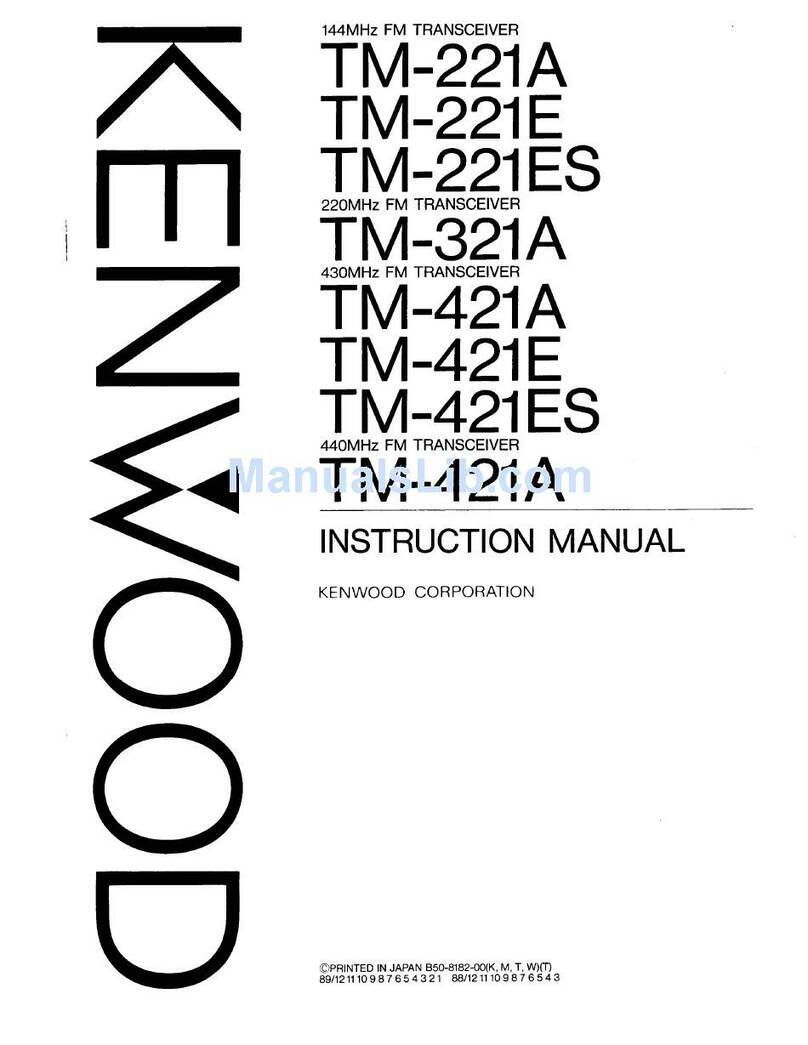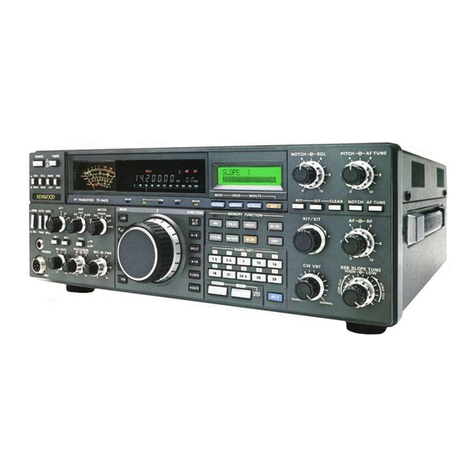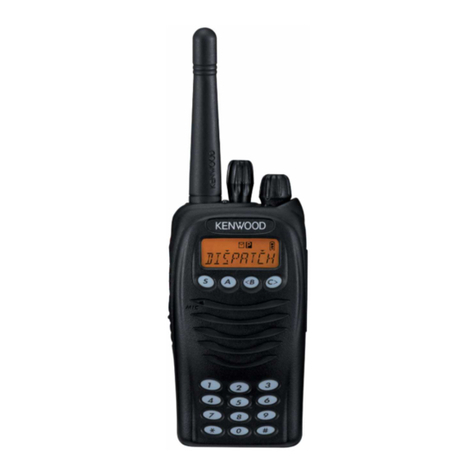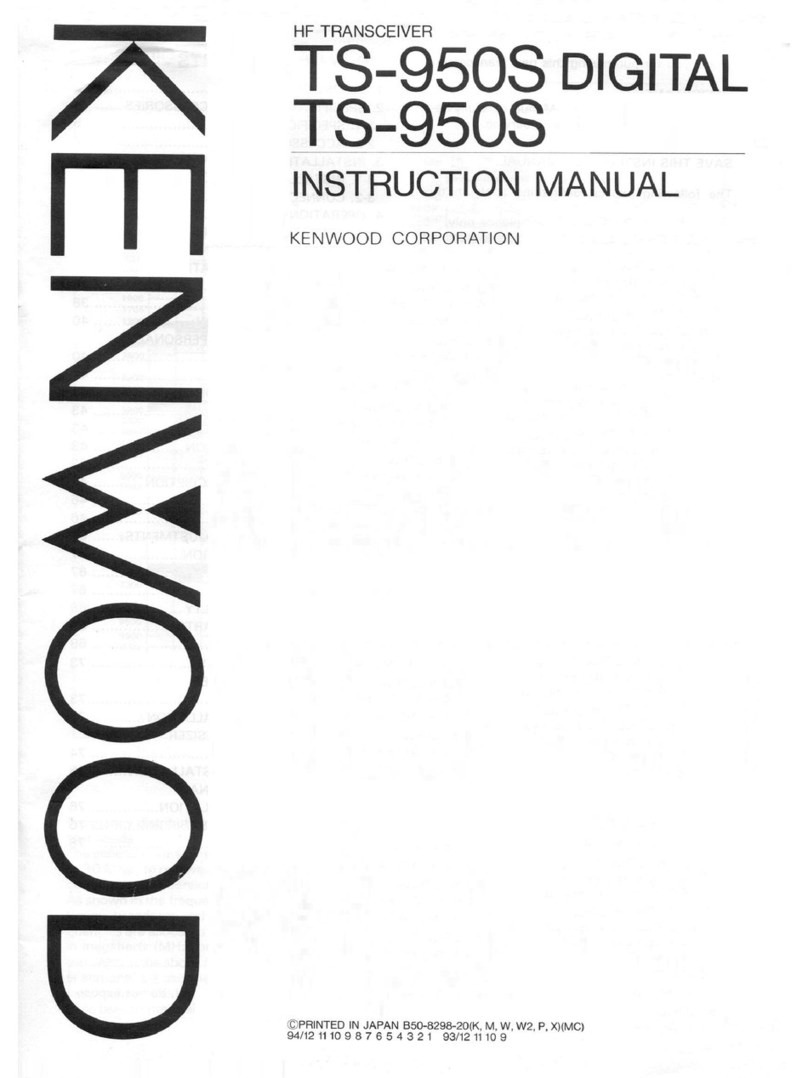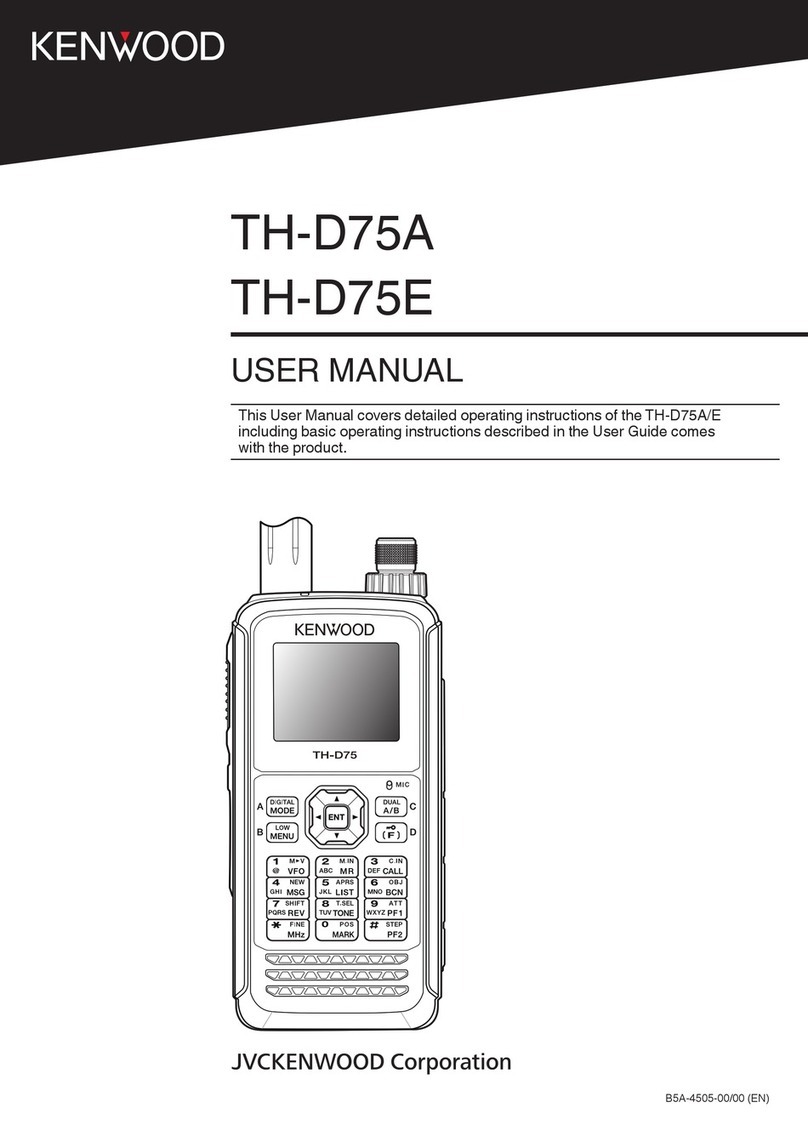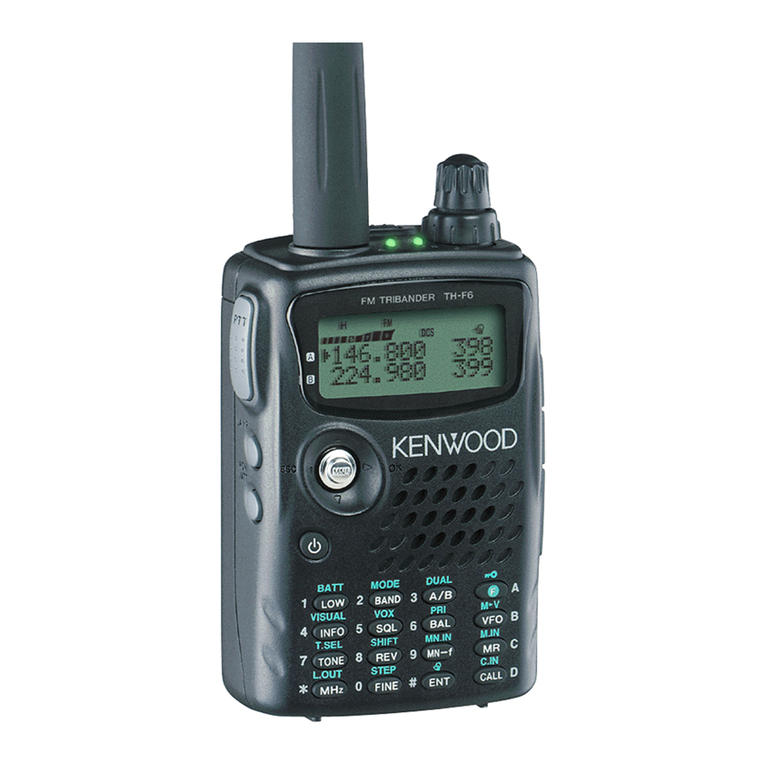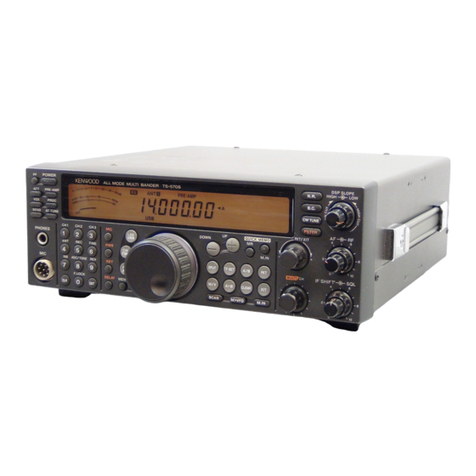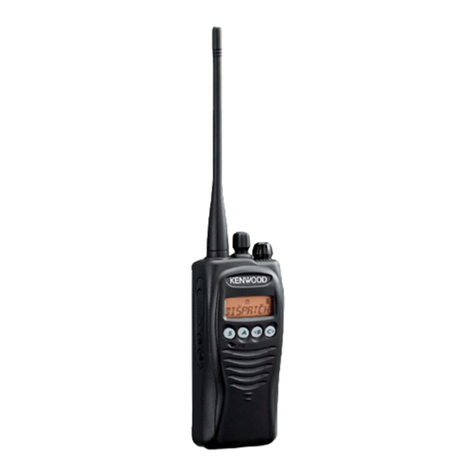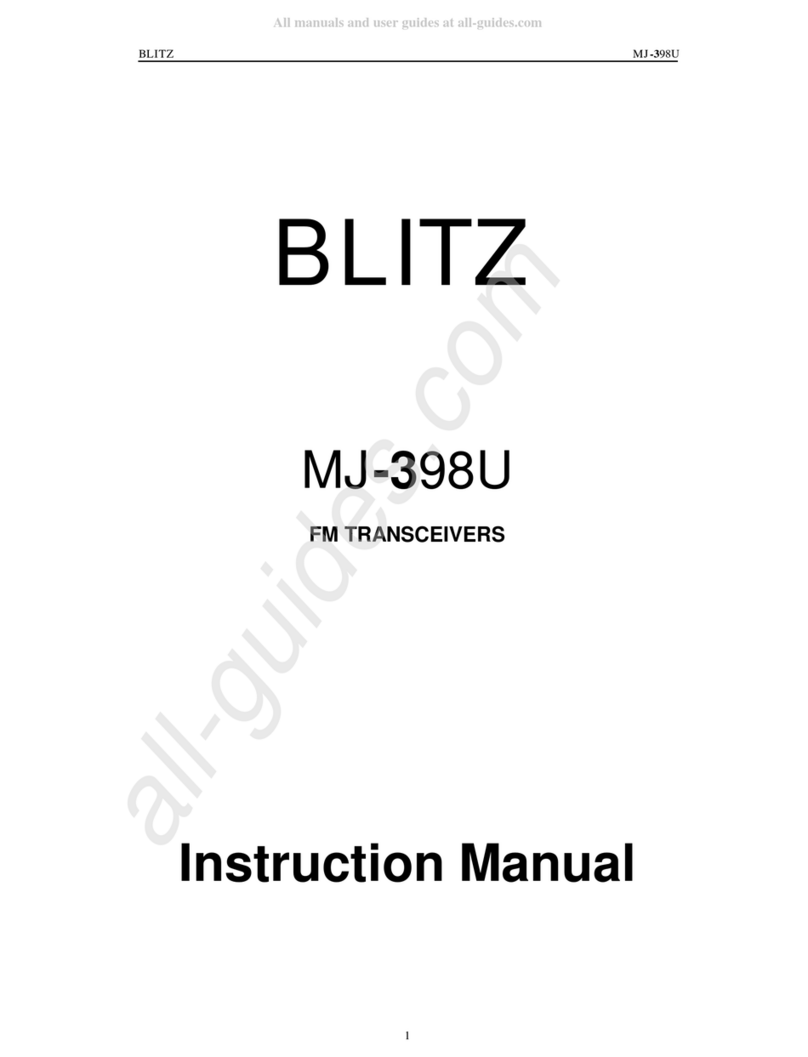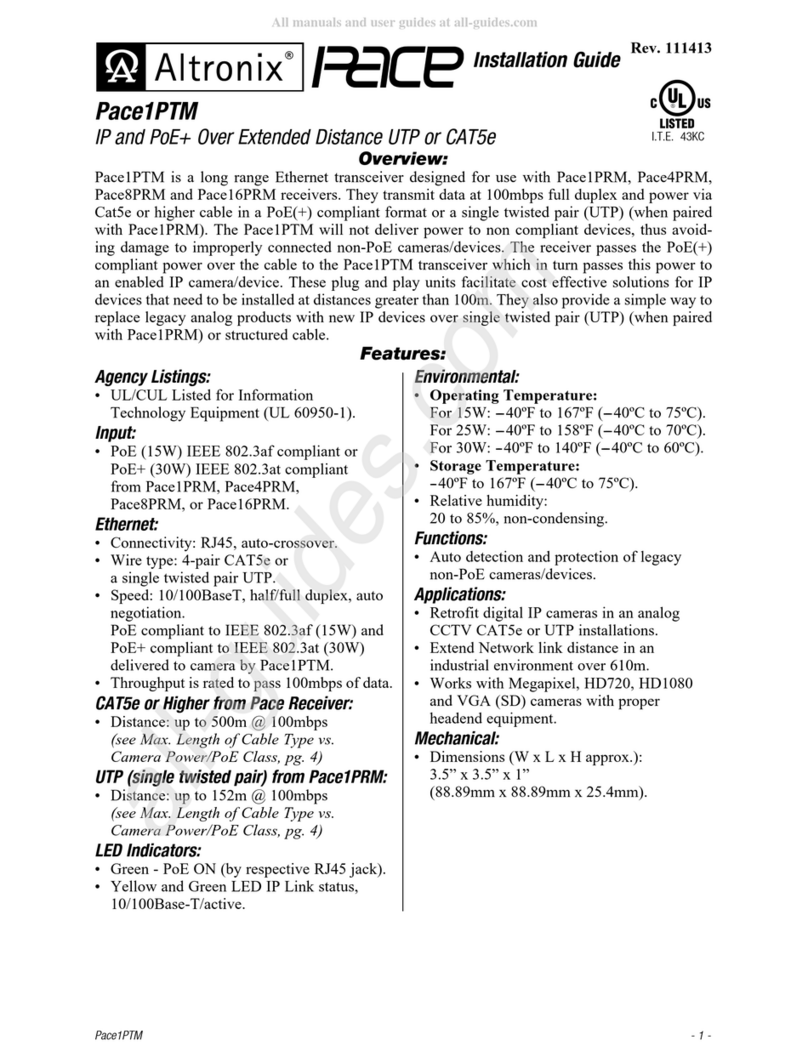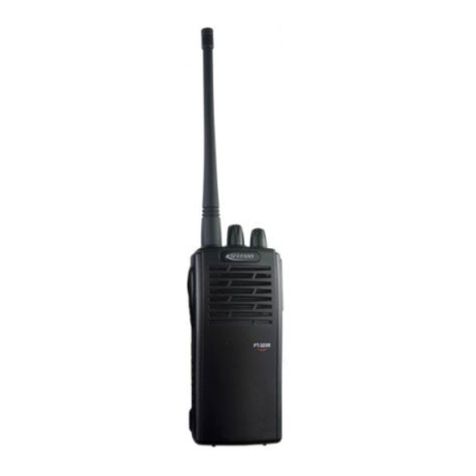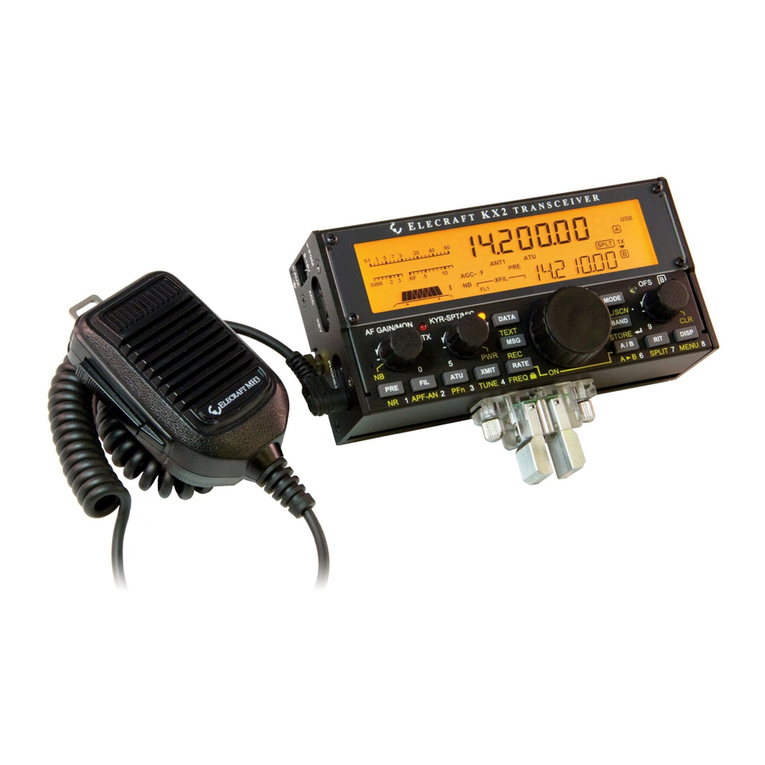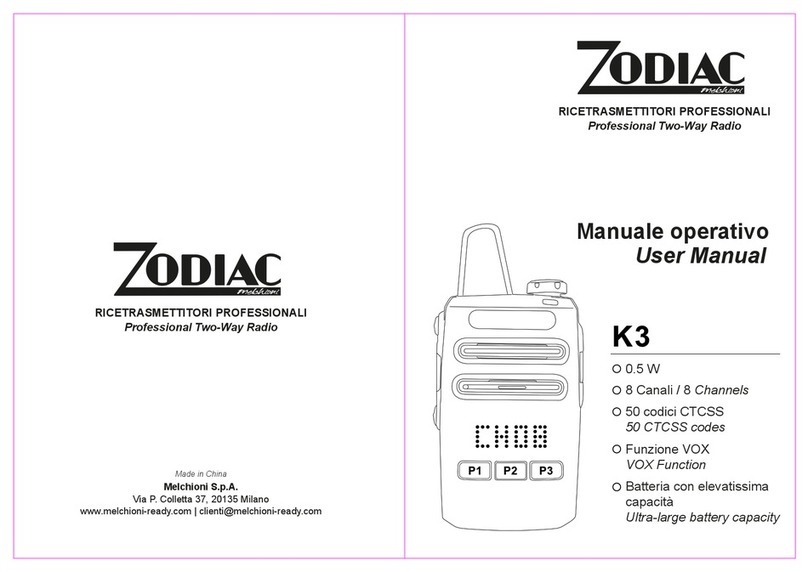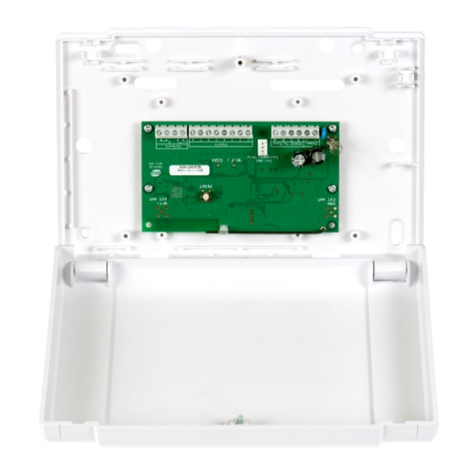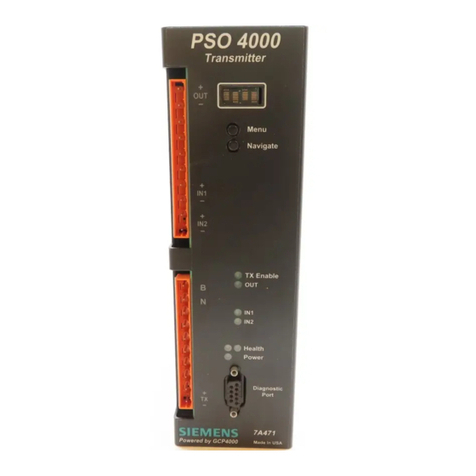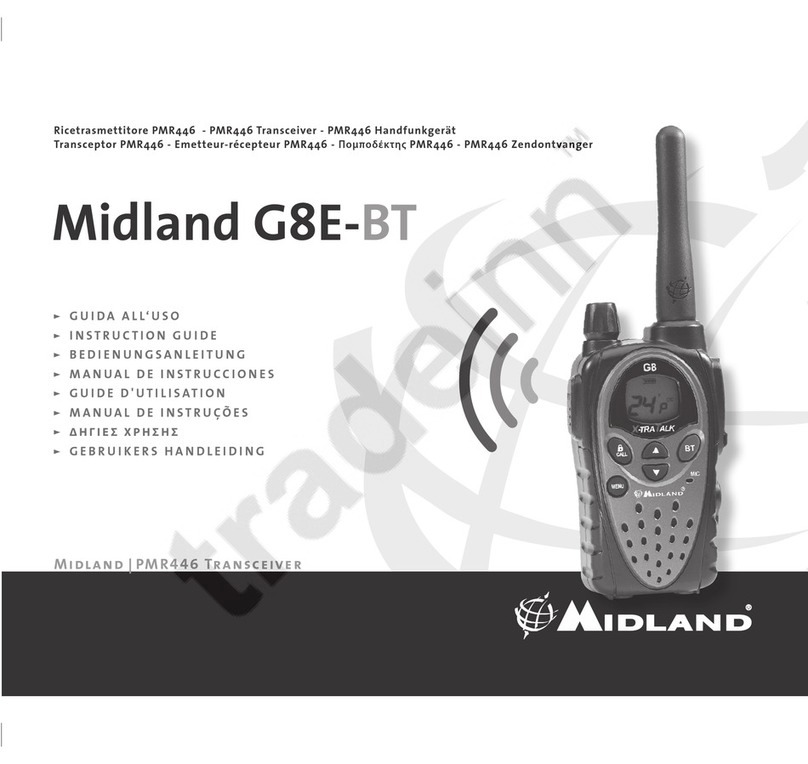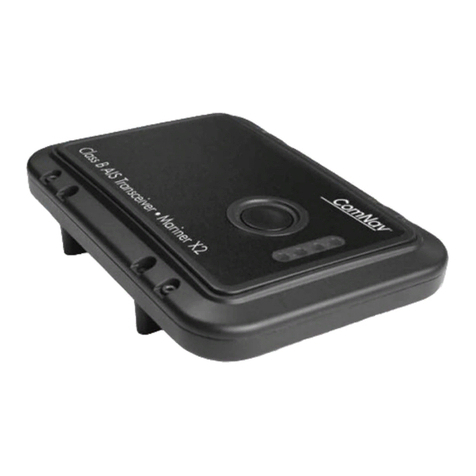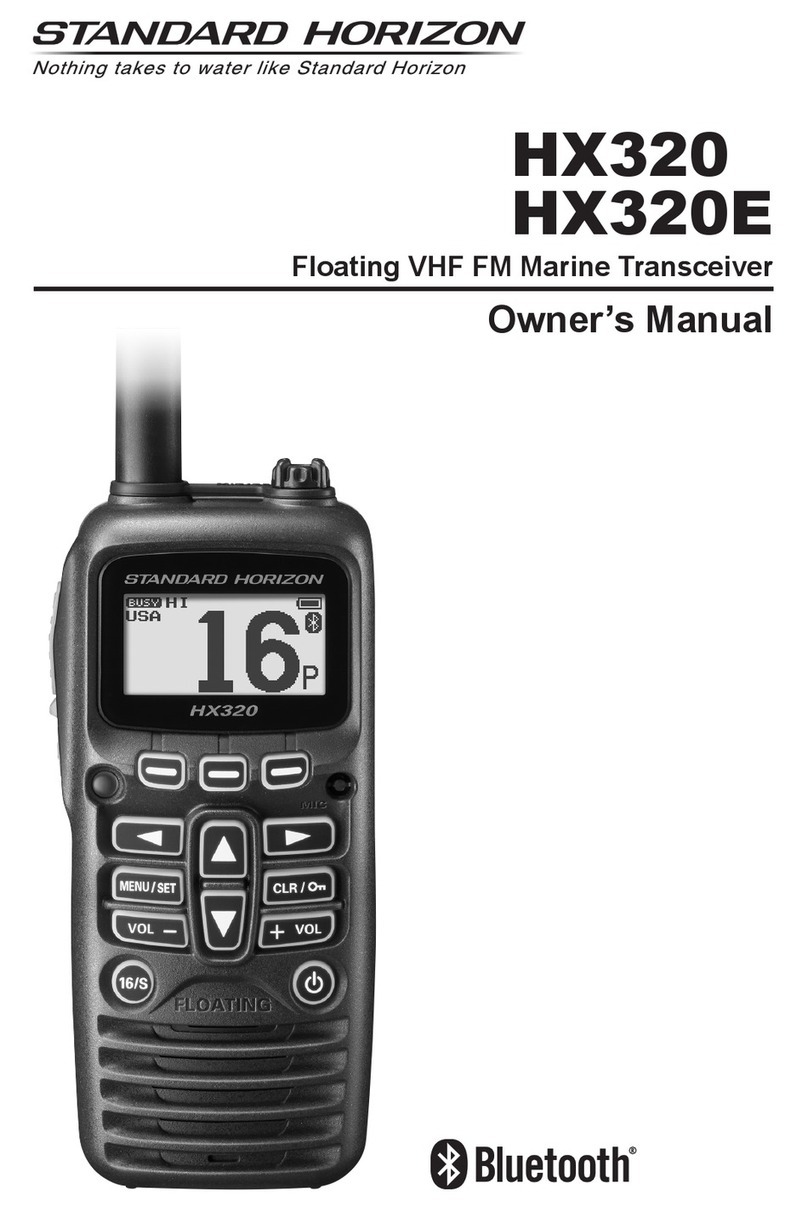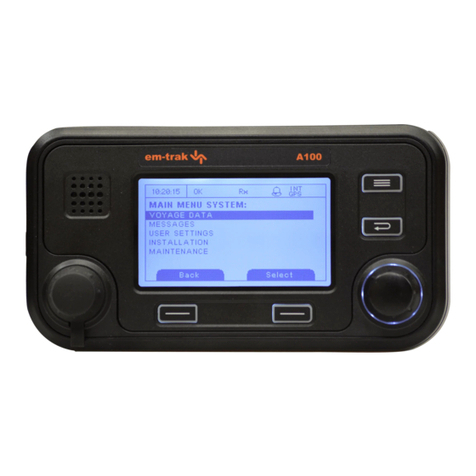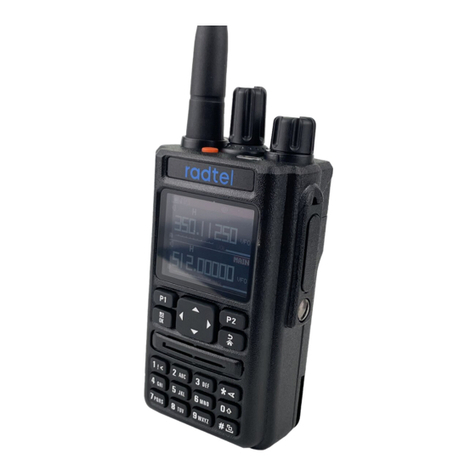
TK-3402(U)/3402/3407
10
CIRCUIT DESCRIPTION
2-3. IF Amplifier Circuit
The first IF signal is passed through a four-pole mono-
lithic crystal filter (XF400) to remove the adjacent channel
signal. The filtered first IF signal is amplified by the first IF
amplifier (Q403) and is then applied to the IF system IC
(IC400).
The IF system IC provides a second mixer, limiting
amplifier, quadrature detector and RSSI (Received Signal
Strength Indicator). The second mixer mixes the first IF sig-
nal with the 50.85MHz signal of the second local oscillator
output (Q403) and produces the second IF signal of 450kHz.
The second IF signal is passed through the ceramic filter
(CF401) to remove the adjacent channel signal. The filtered
second IF signal is amplified by the limiting amplifier and
demodulated by the quadrature detector with the ceramic
discriminator (CD400). The demodulated signal is routed to
the audio circuit.
2-4. Audio Amplifier Circuit
The demodulated signal from IC400 is sent to an AF am-
plifier through IC705, and is routed to an audio power ampli-
fier (INT:IC709,EXT:IC707) where it is amplified and output
to the speaker.
Baseband
IC
IC705 AF PA
(INT)
IC709INT
SP
FM IC
IC400
AF PA
(EXT)
IC707 EXT
SP
SPO
Fig. 3 Audio Amplifier circuit
2-5. Squelch Circuit
Part of the AF signal from the IC400 enters the FM IC
(IC400) again, and the noise component is amplified and
rectified by a filter and an amplifier to produce a DC voltage
corresponding to the noise level.
The DC signal from the FM IC goes to the analog port of
the MCU (IC702). IC702 determines whether or not to output
sounds from the speaker by checking if the input voltage is
higher or lower than the preset value.
To output sounds from the speaker, IC702 sends a high
signal to the AFSW line and turns IC707 on through Q709,
Q710, Q713 and Q716. This explanation is a case of exter-
nal speaker amplifier. In the case of internal loudspeaker
amplifier, IC702 sends a high signal to the AFSW line and
turns IC709 on through Q711 and Q714.
3.Transmitter System
3-1. Microphone Amplifier Circuit
The signal from the microphone is limited by the AGC
circuit, which is composed of D700, D701, Q705, Q706 and
the mute switch (Q704). IC705 is composed of a high-pass
filter, low-pass filter and pre-emphasis/IDC circuit.
The signal from the microphone and the low speed data
from the MCU (IC702) enter the baseband IC (IC705) and
pass through each path and are mixed inside the IC.
The output signal from the audio processor goes to the
VCO modulation input. The other output signal goes to the
TCXO modulation input.
AGC
SW
D702,703
Q705,706
MICM
X1
TCXO
VCO
LSD
OUT
IC705
Q704
MIC
Baseband
MOD1
Fig. 4 Microphone amplifier circuit
3-2. Drive and Final Amplifier Circuit
The signal from the T/R switch (D15 is on) is amplified by
the pre-drive amplifier (Q201) to 20mW.
The output of the pre-drive amplifier is amplified by the
drive amplifier (Q206) and the RF final amplifier (Q208) to
5.0W (1W when the power is low).
The drive amplifier and the RF final amplifier consist of
two MOS FET stages.
The output of the RF final amplifier is then passed
through the harmonic filter (LPF) and antenna switch (D203
and D204) and is applied to the antenna terminal.
3-3. APC Circuit
The APC circuit always monitors the current flowing
through the drive amplifier (Q206) and the RF power ampli-
fier (Q208) and keeps a constant current. The voltage drop
at R230, R231 and R233 is caused by the current flowing
through the RF final amplifier. This voltage is applied to the
differential amplifier IC200 (1/2).
IC200 (2/2) compares the output voltage of IC200 (1/2)
with the reference voltage from IC705(32pin:AUXDAC1).The
output of IC200 (2/2) controls the gate bias voltage of the
RF power amplifier and the drive amplifier to make both volt-
ages the same.
The change of power high/low is carried out by the
change of the reference voltage.

